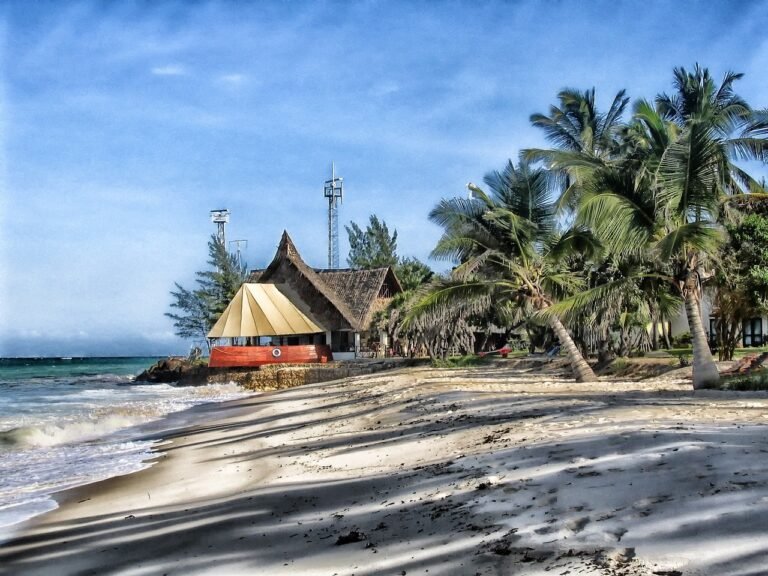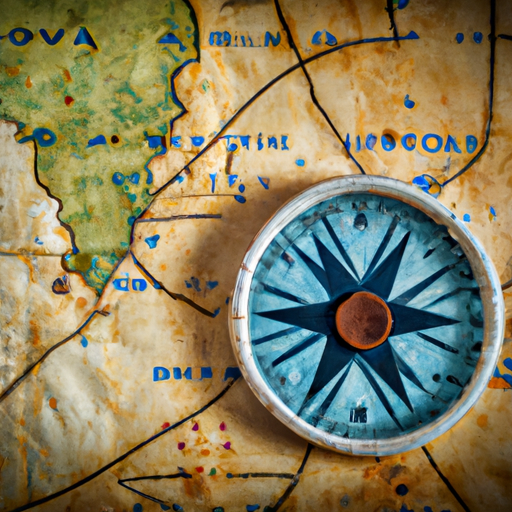What Were Some Of The Challenges Faced By Kenya In Its Early Years Of Independence?
In the early years of Kenya’s independence, the nation faced an array of challenges that tested its resilience and ability to shape its own destiny. From addressing socio-economic disparities to establishing stable government institutions, Kenya’s journey towards progress encountered numerous hurdles that left a lasting impact on the country’s development. This article explores some of the key challenges faced by Kenya during its formative years, shedding light on the obstacles that needed to be overcome to pave the path towards a prosperous future.
Political Challenges
Transition from colonial rule
One of the major challenges faced by Kenya in its early years of independence was the transition from colonial rule to self-governance. After decades of British colonial rule, Kenya had to establish its own political systems and institutions. This transition was not easy, as the country lacked experience and expertise in governing itself.
Lack of political experience
Another challenge that Kenya faced during its early years of independence was the lack of political experience among the newly appointed leaders. Many of the political leaders had spent years fighting for independence and had little or no experience in governing a nation. This lack of experience led to difficulties in effectively managing the country and making informed decisions.
Ethnic divisions and tensions
Ethnic divisions and tensions were also significant challenges faced by Kenya during its early years of independence. The country is home to various ethnic groups, each with its own cultural, linguistic, and social differences. These divisions and tensions often led to conflicts and political instability, making it challenging to establish a united and inclusive nation.
Economic Challenges
Dependency on agricultural sector
One of the main economic challenges faced by Kenya after gaining independence was its heavy reliance on the agricultural sector. The economy was primarily dependent on the export of cash crops such as coffee and tea, leaving the country vulnerable to fluctuations in global market prices. This dependency hindered economic diversification and limited the country’s ability to develop other sectors.
Lack of infrastructure
The lack of infrastructure was another economic challenge that Kenya confronted in its early years of independence. The country had limited road networks, inadequate transportation systems, and a lack of sufficient energy supply. This hindered the movement of goods and people, hampering economic growth and development.
Limited access to education and skilled workforce
Kenya also faced challenges in providing access to education and developing a skilled workforce. The education system was underdeveloped, with a shortage of schools, qualified teachers, and educational resources. This limited access to education and training hindered the development of a skilled workforce, making it difficult for the country to meet the demands of a growing economy.
Social Challenges
Racial discrimination and inequality
Racial discrimination and inequality were significant social challenges faced by Kenya after gaining independence. The legacy of colonialism had left deep-rooted racial divisions, with certain communities facing discrimination and marginalization. This hindered social cohesion and created a sense of injustice among various ethnic groups.
Land distribution and ownership
Land distribution and ownership was another social challenge that Kenya had to address in its early years of independence. Large tracts of land were owned by a small elite group, while the majority of the population had limited access to land for agriculture and housing. This unequal distribution of land created social and economic disparities and fueled tensions within the society.
Tribal clashes and violence
Tribal clashes and violence were also significant social challenges faced by Kenya. Inter-ethnic conflicts often erupted, leading to violence, displacement, and loss of lives. These clashes were fueled by historical grievances, competition over resources, and political manipulation. Overcoming these challenges required addressing deep-seated tribal divisions and promoting dialogue and reconciliation.
Governance Challenges
Corruption and nepotism
Corruption and nepotism were major governance challenges that Kenya faced in its early years of independence. These practices undermined democratic processes, eroded public trust, and hindered development efforts. The equitable distribution of resources and effective governance were compromised, leading to inefficiencies and dissatisfaction among the population.
Inadequate rule of law
The inadequate rule of law was another governance challenge faced by Kenya. The judiciary and legal systems were underdeveloped, leading to a lack of effective enforcement of laws and protection of citizens’ rights. This created an environment of impunity and hindered justice, affecting the trust and confidence of the people in the legal system.
Weak institutions
Kenya also struggled with weak institutions in its early years of independence. The civil service, bureaucracy, and other public institutions lacked capacity, transparency, and accountability. This hindered effective policy implementation and service delivery, leading to inefficiencies and exacerbation of other challenges faced by the country.
Foreign Relations Challenges
Cold War influence
During its early years of independence, Kenya faced challenges related to the influence of the Cold War. As an African nation strategically located in the geopolitically sensitive region, Kenya became a battleground for the superpowers seeking to advance their interests. This influence resulted in increased militarization, political interference, and ideological divisions within the country.
Disputes with neighboring countries
Kenya also faced disputes with its neighboring countries, which added to its foreign relations challenges. Border disputes, tensions over resources, and competition for regional dominance strained relations with countries such as Somalia and Tanzania. These disputes required diplomatic negotiations and efforts to maintain peaceful relationships.
Dependency on foreign aid
Another foreign relations challenge faced by Kenya in its early years of independence was its dependency on foreign aid. The country relied heavily on international assistance to support its development efforts, address economic challenges, and meet basic needs. However, this reliance on aid created vulnerabilities and sometimes resulted in conditions or limitations imposed by donor countries.
Education Challenges
Lack of educational infrastructure
The lack of educational infrastructure was a significant challenge faced by Kenya in its early years of independence. The country had a shortage of schools, classrooms, and learning materials, making it challenging to provide quality education to its population. This limited access to education and hindered the development of a well-educated and skilled workforce.
Shortage of qualified teachers
Kenya also faced a shortage of qualified teachers, particularly in rural areas. The lack of trained teachers affected the quality of education and hindered effective learning. Efforts were made to recruit and train more teachers, but the shortage persisted, impacting the overall educational system.
Inadequate access to education for rural populations
Another education challenge Kenya faced was the inadequate access to education for rural populations. Schools were often located far from rural areas, making it difficult for children to attend and complete their education. This lack of access perpetuated educational disparities between urban and rural areas, hindering opportunities for social and economic advancement.
Health Challenges
High prevalence of diseases
Kenya faced significant health challenges in its early years of independence, including a high prevalence of diseases. Communicable diseases such as malaria, tuberculosis, and HIV/AIDS were major public health concerns. The healthcare system was strained in addressing these diseases, and preventive measures were limited, resulting in high morbidity and mortality rates.
Limited healthcare facilities
The lack of adequate healthcare facilities was another health challenge faced by Kenya. Hospitals and clinics were often inaccessible or lacked necessary equipment, medicines, and trained healthcare professionals. This limited the availability of quality healthcare services, particularly in rural areas.
Malnutrition and poverty-related health issues
Malnutrition and poverty-related health issues were pervasive challenges in Kenya’s early years of independence. Many individuals, especially children, faced malnutrition due to limited access to nutritious food. Poverty-related health issues such as inadequate sanitation, lack of clean water, and poor living conditions further contributed to health disparities and the spread of diseases.
Infrastructure Challenges
Lack of road networks
One of the major infrastructure challenges faced by Kenya was the lack of a well-developed road network. Limited road connectivity hindered transportation of goods, access to markets, and movement of people. This created barriers to economic growth and development, particularly in remote areas.
Insufficient electricity supply
Kenya also faced challenges with insufficient electricity supply in its early years of independence. Many areas had limited or no access to electricity, hindering industrial development and affecting the quality of life for the population. Efforts were made to expand electricity infrastructure, but the demand continued to outpace supply.
Poor water and sanitation systems
The lack of adequate water and sanitation systems posed further challenges to Kenya’s infrastructure development. Access to clean water and proper sanitation facilities was limited, particularly in rural areas. This increased the risk of waterborne diseases and hindered progress in achieving public health goals.
Security Challenges
Presence of armed rebel groups
Kenya faced security challenges due to the presence of armed rebel groups in its early years of independence. Various groups, such as the Mau Mau during the colonial era, continued to pose threats to stability and security. These groups engaged in armed conflict, leading to violence, displacement, and loss of lives.
Border conflicts
Border conflicts with neighboring countries also posed security challenges for Kenya. Disputes over territory and resources sometimes escalated into armed conflicts, creating tensions and instability along the borders. Resolving these conflicts required diplomatic negotiations and peaceful resolutions to maintain regional stability.
Political instability leading to violence
Kenya experienced political instability during its early years of independence, leading to violence and social unrest. Intra-party conflicts, post-election violence, and power struggles within the government resulted in clashes and riots. This instability hindered progress and development, requiring efforts to promote peace, reconciliation, and effective governance.
Post-Colonial Legacy Challenges
Unequal distribution of wealth
The post-colonial legacy of Kenya included an unequal distribution of wealth, which remained a significant challenge. The colonial era had concentrated wealth and resources in the hands of a small elite, perpetuating socio-economic disparities. Overcoming this challenge required inclusive policies and initiatives to redistribute wealth and promote equitable development.
Historical injustices
Kenya also had to confront historical injustices stemming from its colonial past. Oppression, land dispossession, and marginalization of certain communities created deep-seated grievances that needed to be addressed. Acknowledging and rectifying these historical injustices was crucial for national healing and social cohesion.
Legacy of divide and rule tactics
The legacy of divide and rule tactics employed by the colonial powers also posed challenges for post-independence Kenya. Ethnic tensions and conflicts were perpetuated and exploited by those seeking political power. Overcoming this legacy required fostering a sense of national unity, inclusivity, and shared identity, transcending ethnic divisions and promoting a cohesive society.
In conclusion, the early years of independence in Kenya were marked by numerous challenges across political, economic, social, governance, foreign relations, education, health, infrastructure, security, and post-colonial legacy realms. The country had to navigate the complexities of transitioning from colonial rule, building political institutions, managing ethnic divisions, and addressing economic dependencies. Overcoming these challenges required effective governance, investment in education and healthcare, infrastructure development, and promoting social cohesion. Kenya’s journey towards prosperity and stability continues, with the lessons learned from these challenges shaping the nation’s path forward.







